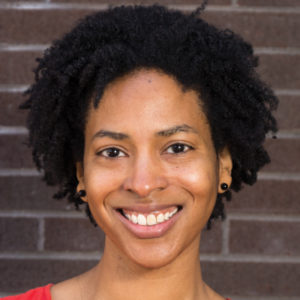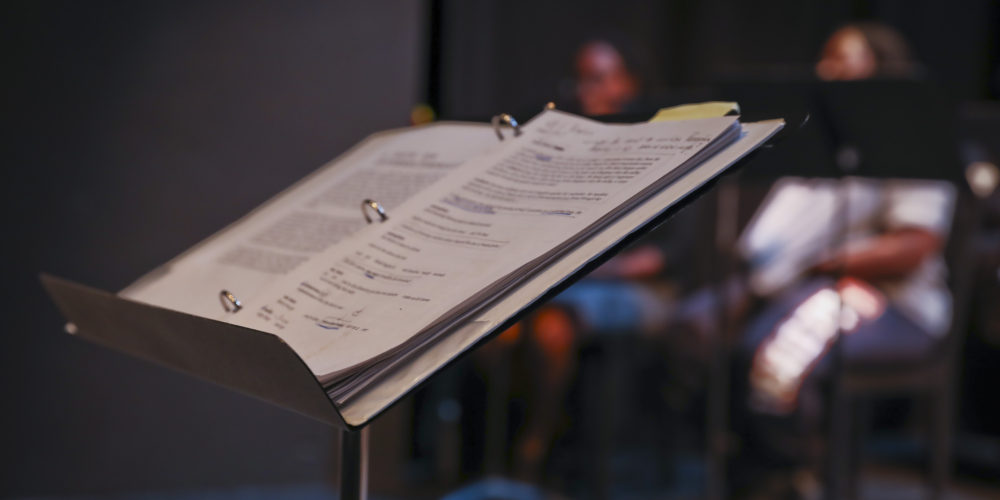22 Jul Deneen Reynolds-Knott Artist Talk

What does the day-to-day process of playwriting look like for you personally?
I carry around a small notebook for each of my plays. Before I sit down in front of the computer, I jot down character’s traits, histories and relationships. I write about the events before the action of the play starts. Once I was drafting Babes in Ho-lland, I was thoughtful about the music I listened to as I typed. I try to make one discovery about the play each day as I’m working. I prefer the revision process because I can print out the full draft, scribble all over it and really figure out what I want the play to be.
What was it about the environment of the play that inspired you to have the story take place there in particular?
Looking back, I recognize the strangeness of 18-year-olds moving from their family to a college campus: perhaps sharing a room with a stranger and experiencing an abrupt blast of freedom they may or may not be ready for. The adjustment can be stark as a young black woman on a predominantly white campus. Placing the story at my alma mater (University of Pittsburgh) gave me an opportunity to reflect but also play because I have a solid sense of that place and time.
Was there a specific moment for you that defined the direction you wanted your play to take?
As a freshman, I attended the first Black Action Society meeting of the year. It was in a large room and it was packed. We were instructed to look one seat to the left and one seat to the right.
“Only one out of three of you will graduate,” the speaker said. The room erupted with denials. No one wanted to hear it. But over the next four years, I watched many friends pack up and leave campus for good. All of them left for financial reasons. And when I graduated, so many students from that first BAS meeting weren’t there.
When writing your play did you imagine a certain audience that you were writing for? If so, how do you think this affected your writing process and the writing itself?
With each play I write, I’m thinking about a handful of people I know. People in my life I would want to hear discuss the story, characters and experience. For Babes in Ho-lland, I was thinking about a young member of my family. As a result, I wanted love to rule this play unabashedly.
Despite most, if not all of the plays being reflections of or inspired by larger events and issues in today’s society, much of the central conflicts revolve around the interpersonal relationships of the characters. What do you think this reflects about your storytelling goal?
In my work, I often consider how governmental, institutional, or corporate policies facilitate or disrupt how we relate to one another. I like to grab the social and political, and drag them into the everyday lives of my characters. I believe we are affected by policy or lack thereof daily, so I am interested in exploring that dynamic with black characters in a variety or environments and situations.
Were there any specific past theatrical movements that you felt inspired your work?
Not a theatrical movement, but a cinematic one. I was/am creatively inspired by the independent film movement of the 90s. Eve’s Bayou. Selections from Killer Films. Countless films from that time captured my imagination. The way stories were told. The look of the films. The innovations with low budgets. There were exciting debuts from black filmmakers and, although I loved theatre, films from that period inspired me to attend film school.
While learning from each other, the characters of Ciara and Taryn both unapologetically remain uncompromising with who they are and their beliefs. What message do you think this sends to current and future playwrights and storytellers, especially those who write about the black female experience?
I’m not sure I want to send a message to playwrights and storytellers, because I hope black women creators explore the full spectrum of black female experiences as they choose. If a writer feels reluctant to write characters like Ciara and Taryn, I hope Babes in Ho-lland unlocks the possibility for them.
Get your tickets to Babes in Ho-lland and all the BAPF2020 plays!
Deneen Reynolds-Knott is a member of Clubbed Thumb’s 2019-2020 Early-Career Writers’ Group and received a finalist grant from their 2018 Open-Application Commission. She is a New Georges affiliated artist and has developed work with Liberation Theatre Company’s Writing Residency, Project Y’s Playwrights Group, Rising Circle’s INKtank Development Lab and Frank Silvera Workshop’s 3in3 Playwright Residency. Her full-length play, Baton, was selected for the 2018 Premiere Play Festival and received a workshop reading at Premiere Stages, the 2017 Playfest at the Orlando Shakespeare Company, and was a finalist for the 2017 PlayPenn and Bay Area Playwrights conferences. Deneen’s play, Antepartum, was presented at the 2020 Fire This Time Festival as part of their signature ten-minute play program. She received her MFA in film from Columbia University.
About Babes in Ho-lland: During a sunless Pittsburgh winter in 1996, Ciara and Taryn connect over a shared love for R&B girl groups but quickly discover something deeper. While attending a predominantly white college, these two black students create their own bubble of self discovery, music and sanctuary in Ciara’s Holland Hall dorm room. However, the stress of love, financial hardship, and the persistent lack of privacy threaten to destroy it.



No Comments